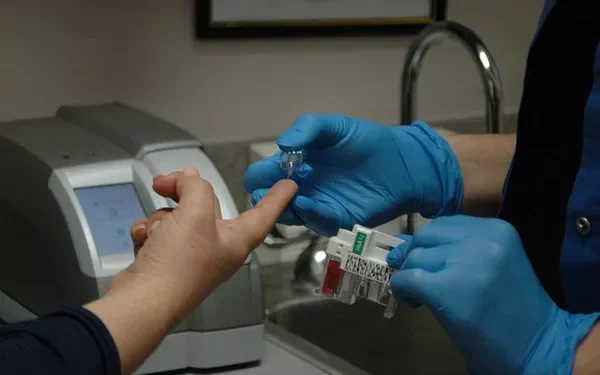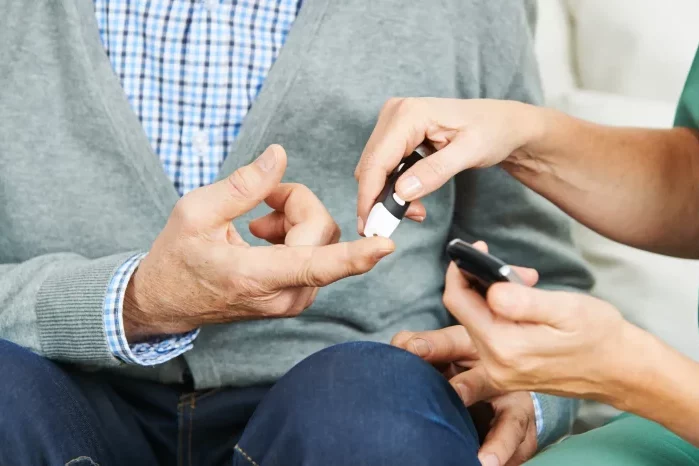In recent years, the landscape of diabetes management has significantly evolved, with advancements in technology providing more convenient and efficient tools for individuals to monitor their health. Among the most notable innovations are blood sugar monitoring watches, devices that allow for continuous or intermittent glucose monitoring with a level of convenience previously unimaginable. These devices are marketed as offering real-time, user-friendly ways to monitor blood glucose levels, promising to improve diabetes management and potentially reduce the burden of traditional finger-prick methods.
However, with all the hype surrounding these high-tech gadgets, the question remains: are blood sugar monitoring watches truly effective? Are they worth the investment, and do they live up to the claims made by manufacturers? In this article, we will thoroughly examine the efficacy, benefits, limitations, and considerations surrounding blood sugar monitoring watches, offering an evidence-based perspective for individuals living with diabetes.
Understanding Blood Sugar Monitoring in Diabetes
Before delving into the specifics of blood sugar monitoring watches, it’s essential to have a clear understanding of the role of blood sugar monitoring in diabetes management. Diabetes is a chronic condition that affects the body’s ability to regulate blood glucose (sugar) levels. Monitoring blood sugar levels is critical for individuals with both Type 1 and Type 2 diabetes, as it allows for better control of blood glucose levels, helps prevent complications, and aids in treatment adjustments.
Traditional methods of blood glucose monitoring typically involve finger-prick tests using a glucose meter. These tests provide instant feedback about blood sugar levels but require users to manage the discomfort and inconvenience of repeated finger-pricks throughout the day. Over time, this process can become burdensome, and many individuals with diabetes seek alternatives that can provide more continuous, non-invasive, and convenient ways to monitor their blood glucose.
The Emergence of Blood Sugar Monitoring Watches
Blood sugar monitoring watches are part of a broader category of wearable devices designed to make health tracking more accessible. These devices use technology such as Continuous Glucose Monitoring (CGM) sensors or optical sensing to measure blood sugar levels with minimal or no skin penetration. Some watches use sensors that rely on sweat, interstitial fluid, or light-based technology to estimate glucose concentrations in the blood, while others work in conjunction with an external CGM sensor that tracks glucose levels in real-time.
These wearable devices are marketed as convenient solutions for people with diabetes who want to better manage their glucose levels without the need for invasive procedures like finger-prick tests. They claim to provide a more comfortable, continuous monitoring experience while offering insights into trends and patterns that can help optimize diabetes care.
How Do Blood Sugar Monitoring Watches Work?
Blood sugar monitoring watches generally work by using one of two methods: sensor-based technology or optical-based technology.
Sensor-Based Technology: This is similar to Continuous Glucose Monitors (CGMs) that are already on the market. CGM systems work by measuring glucose levels in the interstitial fluid (the fluid between the cells). The sensors in the watch communicate with a transmitter worn on the body (usually on the upper arm or abdomen) to send glucose data to the watch or a smartphone. CGMs can provide continuous readings, offering real-time information about blood sugar levels and trends.
Optical-Based Technology: Some blood sugar monitoring watches use non-invasive technology, such as near-infrared spectroscopy or optical sensors, to measure blood glucose. These sensors analyze the way light interacts with the skin and underlying tissues, estimating glucose levels based on these interactions. While these technologies are promising, they are still under development and face challenges in terms of accuracy and consistency.
The advantage of these wearable technologies is that they offer a convenient, real-time way of monitoring glucose levels without the need for constant finger-pricking. However, their reliability and accuracy have raised some concerns.
Advantages of Blood Sugar Monitoring Watches
Despite their limitations, blood sugar monitoring watches do offer several notable advantages, particularly in terms of convenience and user experience. Some of the key benefits include:
1. Continuous Monitoring and Real-Time Feedback
Traditional blood sugar monitoring methods require individuals with diabetes to check their glucose levels at specific times of the day, such as before meals or after exercise. With blood sugar monitoring watches, users can obtain real-time feedback on their glucose levels throughout the day. This can be incredibly valuable for detecting fluctuations in blood sugar and identifying patterns that may not be immediately apparent with intermittent testing.
For example, if an individual’s blood glucose levels tend to rise after meals, a monitoring watch can alert them in real time, prompting them to take corrective action, such as adjusting insulin doses or engaging in physical activity. This continuous data can help improve diabetes management and reduce the risk of hyperglycemia (high blood sugar) or hypoglycemia (low blood sugar).
2. Comfort and Convenience
One of the most compelling aspects of blood sugar monitoring watches is the comfort and convenience they offer. Unlike traditional finger-prick tests, which can be painful and time-consuming, these watches provide a non-invasive method for tracking blood glucose levels. For individuals who must perform numerous glucose tests throughout the day, the ability to monitor glucose without repeatedly pricking their fingers can significantly reduce discomfort and improve the overall experience.
Additionally, wearable devices such as smartwatches often provide other functionalities, such as fitness tracking, notifications, and compatibility with other health-related apps. These added features can create a more seamless, integrated experience for users.
3. Improved Diabetes Management
Blood sugar monitoring watches can also assist in better diabetes management by providing users with more granular data about their glucose levels. The continuous or frequent glucose readings allow users to see how their blood sugar changes over time, which can be helpful in managing insulin doses, meal timing, exercise, and stress. Over time, this data can also be used to identify trends, such as the effects of certain foods or lifestyle habits on glucose levels.
With the ability to track these trends, users can make more informed decisions about their diabetes care. For example, a person might notice that their glucose levels spike after consuming a specific food and adjust their diet accordingly.
4. Better Insight into Patterns and Trends
Diabetes management involves more than just checking blood sugar levels at isolated moments. It’s about understanding how lifestyle factors, meals, exercise, and medications affect glucose levels. Traditional monitoring can sometimes miss subtle fluctuations, especially when tests are spaced apart. Blood sugar monitoring watches, however, provide a continuous stream of data that helps users observe long-term trends in glucose levels.
This continuous data can be valuable in fine-tuning treatment plans, as it gives healthcare providers a clearer picture of a person’s blood glucose patterns. They can use this data to adjust medication regimens, suggest changes in diet, or recommend modifications to exercise routines.
5. Encourages Greater Engagement with Diabetes Care
Having access to real-time glucose data can motivate individuals with diabetes to take a more active role in their health. The convenience and immediacy of seeing glucose levels on a wearable device can promote greater awareness and encourage individuals to make healthier decisions throughout the day. For example, someone might notice that their glucose levels rise after consuming a sugary beverage and decide to switch to water or a healthier option next time.
By fostering a more engaged approach to diabetes care, blood sugar monitoring watches can lead to improved outcomes and better adherence to diabetes management strategies.
Limitations and Challenges of Blood Sugar Monitoring Watches
While blood sugar monitoring watches offer numerous benefits, they also come with certain limitations and challenges that should be considered before investing in such a device. Some of the key drawbacks include:
1. Accuracy Concerns
One of the most significant challenges with blood sugar monitoring watches—especially those using non-invasive or optical-based technology—is their accuracy. Many early-stage devices have shown inconsistencies in their glucose readings, with some users reporting discrepancies between their blood sugar levels as measured by traditional glucose meters and those shown by the monitoring watch.
For individuals with diabetes, accurate blood sugar readings are essential for making decisions regarding insulin administration, meal planning, and other aspects of diabetes care. Inaccurate readings can lead to poor decision-making, potentially resulting in dangerously high or low blood sugar levels.
Although some sensor-based systems have demonstrated a higher degree of accuracy, it is still important to consider the limitations of these devices and use them in conjunction with other methods, such as traditional blood glucose meters or laboratory tests, for confirmation.
2. Cost and Accessibility
Blood sugar monitoring watches, particularly those equipped with advanced technology, can be expensive. While prices vary depending on the brand and features, many of these devices cost significantly more than traditional glucose meters. In addition to the initial investment, users may need to purchase replacement sensors or accessories, which can add to the ongoing costs.
For some individuals with diabetes, especially those without sufficient health insurance coverage, the cost of these devices may be prohibitive. Moreover, access to certain models may be limited based on geographic location or availability.
3. Limited by Sensor Lifespan
Some blood sugar monitoring watches rely on external sensors that must be replaced periodically. These sensors, which are often adhesive patches placed on the skin, can become worn out or lose their effectiveness over time. Depending on the system, users may need to replace these sensors every few days or weeks. This can be inconvenient, especially if the sensors are expensive or difficult to obtain.
4. Skin Sensitivity and Irritation
Wearing a continuous glucose monitoring sensor on the skin for prolonged periods can sometimes lead to irritation or skin sensitivity. This issue is not unique to blood sugar monitoring watches; it is a common challenge with many CGM systems. Some individuals may experience redness, itching, or rashes at the site where the sensor is applied, which can be uncomfortable and interfere with regular use.
5. Reliance on Technology
Like all electronic devices, blood sugar monitoring watches are susceptible to technological issues, such as battery depletion, malfunction, or connectivity problems. While most modern devices are designed to be durable, there’s always
the risk of a device failure at an inconvenient time, which could lead to inaccurate readings or a lack of access to real-time glucose data.
Conclusion: Are Blood Sugar Monitoring Watches Worth It?
In conclusion, blood sugar monitoring watches offer a promising and convenient alternative to traditional finger-prick testing for people with diabetes. They provide continuous, real-time feedback on glucose levels, help individuals observe patterns and trends, and foster greater engagement with diabetes care. For many, these devices represent a breakthrough in making diabetes management more manageable and less invasive.
However, blood sugar monitoring watches are not without their limitations. Issues related to accuracy, cost, sensor lifespan, and skin irritation can make these devices challenging for some individuals to use effectively. Moreover, while they provide valuable information, they should not be relied upon exclusively for managing diabetes. It’s important to use them in conjunction with other methods and in consultation with healthcare professionals.
Ultimately, whether a blood sugar monitoring watch is a good investment depends on the individual’s specific needs, preferences, and lifestyle. For those who prioritize convenience, are comfortable with wearable technology, and are willing to invest in the device, a monitoring watch can be a helpful addition to their diabetes management toolkit. However, it is essential to carefully assess the device’s accuracy, cost, and overall fit with your healthcare routine before making a decision. As with any new technology, it is important to stay informed and make choices that best support your long-term health and well-being.
Related topics:
What Is a Good Blood Glucose Reading in the Morning?


























